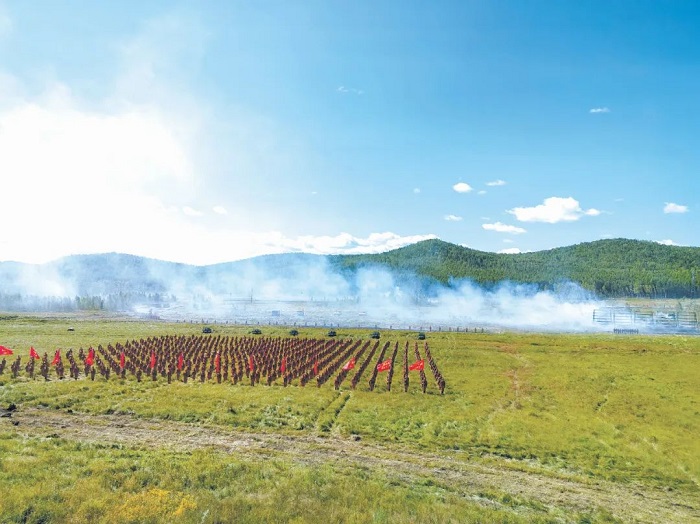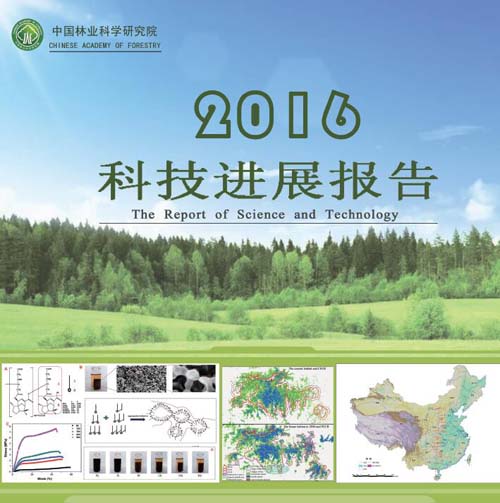
国外森林地上部分碳汇遥感监测方法综述
编号
lyqk003938


中文标题
国外森林地上部分碳汇遥感监测方法综述


作者单位
北京林业大学森林培育与保护重点实验室,北京 100083;北京林业大学森林培育与保护重点实验室,北京 100083;北京林业大学森林培育与保护重点实验室,北京 100083;北京林业大学森林培育与保护重点实验室,北京 100083


期刊名称
世界林业研究


年份
2012


卷号
25


期号
6


栏目编号
1


栏目名称
专题论述


中文摘要
森林的碳汇功能对缓解气候变化具有重要作用,森林碳汇的计量和监测方法备受关注,其中应用遥感方法对森林地上部分碳汇进行监测计量已经成为目前林业遥感的热点。文中基于光学遥感、微波雷达和激光雷达3种常用的遥感数据源综述了国外森林地上部分碳汇遥感监测的主要方法,并讨论了这些监测方法的精度和不确定性。得出:1)基于光学遥感数据的多元回归分析法在森林地上部分碳汇估算中应用最为广泛,人工神经网络法具有更高的估算精度;2)微波雷达系统能够穿透云层,可用于多云地区森林地上部分碳汇的估算;3)基于激光雷达数据的估算结果是三者中精度最高的,可用于高生物量地区森林地上部分碳汇的监测。


基金项目
国家林业局公益面上项目(2011473和201104035)


英文标题
A Review of Overseas Remote Sensing Monitoring Methods for Aboveground Forest Carbon Sink


作者英文名
Huang Conghong,Zhang Zhiyong,Zhang Wenjuan and Yang Jun


单位英文名
Key Laboratory of Silviculture and Conservation,Ministry of Education,Beijing Forestry University,Beijing 100083,China;Key Laboratory of Silviculture and Conservation,Ministry of Education,Beijing Forestry University,Beijing 100083,China;Key Laboratory of Silviculture and Conservation,Ministry of Education,Beijing Forestry University,Beijing 100083,China;Key Laboratory of Silviculture and Conservation,Ministry of Education,Beijing Forestry University,Beijing 100083,China


英文摘要
Forest carbon sink is important for mitigating the climate change. Therefore the methods for quantifying and monitoring of forest carbon sink have attracted great attentions. Among them, monitoring the aboveground forest carbon sink with remote sensing has become a hotspot in the research of forest remote sensing. This article reviewed the main methods that foreign countries adopt to monitor the aboveground forest carbon sink with remote sensing based on three types of remote sensing data (i.e., optical sensor data, Radar data and Lidar data). Then we discussed the accuracy and uncertainty of these monitoring methods with remote sensing techniques. We reached the following conclusions: 1) The multiple regression analysis method with optical remote sensing data is the most common method in estimating the aboveground forest carbon sink, while the artificial neural network method tends to produce more accurate results than the multiple regression analysis method; 2) Radar system has the ability to penetrate cloud cover, so it can be used to estimate the aboveground forest carbon sink in cloudy areas; and 3) The accuracy of estimating results based on Lidar data is the highest among three types of remote sensing data, and Lidar data can be used for monitoring the aboveground forest carbon sink in high biomass areas.


英文关键词
forest carbon sink;remote sensing monitoring;optical sensor;Radar;Lidar


起始页码
20


截止页码
26


投稿时间
2012/5/28


分类号
S771.8


参考文献
[1] Piao S, Fang J, Zhu B, et al. Forest biomass carbon stocks in China over the past 2 decades: estimation based on integrated inventory and satellite data[J]. Journal of Geophysical Research, 2005, 110(G01006): 1-10.
[2] Takahashi M, Ishizuka S, Ugawa S, et al. Carbon stock in litter, deadwood and soil in Japan's forest sector and its comparison with carbon stock in agricultural soils[J]. Soil Science and Plant Nutrition, 2010, 56(1): 19-30.
[3] Lu D S. The potential and challenge of remote sensing-based biomass estimation[J].International Journal of Remote Sensing,2006,27(7): 1297-1328.
[4] Wang G, Zhang M, Gertner G Z, et al. Uncertainties of mapping aboveground forest carbon due to plot locations using national forest inventory plot and remotely sensed data[J]. Scandinavian Journal of Forest Research, 2011, 26(4): 360-373.
[5] Lu D, Chen Q, Wang G, et al. Aboveground forest biomass estimation with landsat and LiDAR data and uncertainty analysis of the estimates[J]. International Journal of Forestry Research, 2012(2012), 2012: 1-16.
[6] Anaya J A, Chuvieco E, Palacios-Orueta A. Aboveground biomass assessment in Colombia: a remote sensing approach[J]. Forest Ecology and Management, 2009, 257(4): 1237-1246.
[7] Li H, Mausel P, Brondizio E, et al. A framework for creating and validating a non-linear spectrum-biomass model to estimate the secondary succession biomass in moist tropical forests[J]. Isprs Journal of Photogrammetry and Remote Sensing, 2010, 65(2): 241-254.
[8] Lu D. Aboveground biomass estimation using Landsat TM data in the Brazilian Amazon[J]. International Journal of Remote Sensing, 2005, 26(12): 2509-2525.
[9] Steininger M. Satellite estimation of tropical secondary forest above-ground biomass: data from Brazil and Bolivia[J]. International Journal of Remote Sensing, 2000, 21(6/7): 1139-1157.
[10] Xu X, Du H, Zhou G, et al. Estimation of aboveground carbon stock of Moso bamboo (Phyllostachys heterocycla var. pubescens) forest with a Landsat Thematic Mapper image[J]. International Journal of Remote Sensing, 2011, 32(5): 1431-1448.
[11] Zheng D L, Rademacher J, Chen J Q, et al. Estimating aboveground biomass using Landsat 7 ETM+ data across a managed landscape in northern Wisconsin, USA[J]. Remote Sensing of Environment, 2004, 93(3): 402-411.
[12] Heiskanen J. Estimating aboveground tree biomass and leaf area index in a mountain birch forest using ASTER satellite data[J]. International Journal of Remote Sensing, 2006, 27(6): 1135-1158.
[13] Foody G M, Cutler M E, McMorrow J, et al. Mapping the biomass of Bornean tropical rain forest from remotely sensed data[J]. Global Ecology and Biogeography, 2001, 10(4): 379-387.
[14] Mas J, Flores J. The application of artificial neural networks to the analysis of remotely sensed data[J]. International Journal of Remote Sensing, 2008, 29(3): 617-663.
[15] Foody G M, Boyd D S, Cutler M E J. Predictive relations of tropical forest biomass from Landsat TM data and their transferability between regions[J]. Remote Sensing of Environment, 2003, 85(4): 463-474.
[16] Coulibaly L, Migolet P, Adegbidi H G, et al. Mapping aboveground forest biomass from ikonos satellite image and multi-source geospatial data using Neural Networks and a Kriging Interpolation. IEEE International Geoscience and Remote Sensing Symposium, Boston, USA, 2008: 298-301.
[17] Labrecque S, Fournier R A, Luther J E, et al. A comparison of four methods to map biomass from Landsat-TM and inventory data in western Newfoundland[J]. Forest Ecology and Management, 2006, 226(1/2/3): 129-144.
[18] Powell S L, Cohen W B, Healey S P, et al. Quantification of live aboveground forest biomass dynamics with Landsat time-series and field inventory data: a comparison of empirical modeling approaches[J]. Remote Sensing of Environment, 2010, 114(5): 1053-1068.
[19] Fazakas Z, Nilsson M, Olsson H. Regional forest biomass and wood volume estimation using satellite data and ancillary data[J]. Agricultural and Forest Meteorology, 1999, 98/99: 417-425.
[20] Tuominen S, Eerikainen K, Schibalski A, et al. Mapping biomass variables with a multi-source forest inventory technique[J]. Silva Fennica, 2010, 44(1): 109-119.
[21] Fournier R, Luther J, Guindon L, et al. Mapping aboveground tree biomass at the stand level from inventory information: test cases in Newfoundland and Quebec[J]. Canadian Journal of Forest Research, 2003, 33(10): 1846-1863.
[22] Luther J, Fournier R, Piercey D, et al. Biomass mapping using forest type and structure derived from Landsat TM imagery[J]. International Journal of Applied Earth Observation and Geoinformation, 2006, 8(3): 173-187.
[23] Chirici G, Giuliarelli D, Biscontini D, et al. Large-scale monitoring of coppice forest clearcuts by multitemporal very high resolution satellite imagery:a case study from central Italy[J]. Remote Sensing of Environment, 2011,115(4):1025-1033.
[24] Tsui O W, Coops N C, Wulder M A, et al. Using multi-frequency radar and discrete-return LiDAR measurements to estimate above-ground biomass and biomass components in a coastal temperate forest[J]. ISPRS Journal of Photogrammetry and Remote Sensing, 2012, 69: 121-133.
[25] Ryan C M, Hill T, Woollen E, et al. Quantifying small-scale deforestation and forest degradation in African woodlands using radar imagery[J]. Global Change Biology, 2012, 18(1): 243-257.
[26] Balzter H, Rowland C S, Saich P. Forest canopy height and carbon estimation at Monks Wood National Nature Reserve, UK, using dual-wavelength SAR interferometry[J]. Remote Sensing of Environment, 2007, 108(3): 224-239.
[27] Morel A C, Saatchi S S, Malhi Y, et al. Estimating aboveground biomass in forest and oil palm plantation in Sabah, Malaysian Borneo using ALOS PALSAR data[J]. Forest Ecology and Management, 2011, 262(9): 1786-1798.
[28] Wulder M A, White J C, Nelson R F, et al. Lidar sampling for large-area forest characterization: a review[J]. Remote Sensing of Environment, 2012, 121: 196-209.
[29] Asner G P, Mascaro J, Muller-Landau H C, et al. A universal airborne LiDAR approach for tropical forest carbon mapping[J]. Oecologia, 2012, 168(4): 1147-1160.
[30] Chen Q, Vaglio Laurin G, Battles J J, et al. Integration of airborne lidar and vegetation types derived from aerial photography for mapping aboveground live biomass[J]. Remote Sensing of Environment, 2012, 121: 108-117.
[31] Dubayah R O, Sheldon S L, Clark D B, et al. Estimation of tropical forest height and biomass dynamics using lidar remote sensing at La Selva, Costa Rica[J]. Journal of Geophysical Research:Biogeosciences, 2010, 115(G00E09).
[32] Nsset E, Gobakken T. Estimation of above-and below-ground biomass across regions of the boreal forest zone using airborne laser[J]. Remote Sensing of Environment, 2008, 112(6): 3079-3090.
[33] Naesset E, Gobakken T, Solberg S, et al. Model-assisted regional forest biomass estimation using LiDAR and InSAR as auxiliary data: a case study from a boreal forest area[J]. Remote Sensing of Environment, 2011, 115(12): 3599-3614.
[34] Lefsky M A,Cohen W B,Harding D J,et al.Lidar remote sensing of above‐ground biomass in three biomes[J].Global Ecology and Biogeography,2002,11(5): 393-399.
[35] Hurtt G C,Dubayah R,Drake J,et al. Beyond potential vegetation: combining lidar data and a height-structured model for carbon studies[J]. Ecological Applications,2004,14(3): 873-883.
[36] Goetz S J, Sun M, Baccini A, et al. Synergistic use of spaceborne lidar and optical imagery for assessing forest disturbance: an Alaska case study[J]. Journal of Geophysical Research:Biogeosciences, 2010, 115(GOOE07).
[37] Koch B. Status and future of laser scanning, synthetic aperture radar and hyperspectral remote sensing data for forest biomass assessment[J]. Isprs Journal of Photogrammetry and Remote Sensing, 2010, 65(6): 581-590.
[38] Krankina O N, Harmon M E, Cohen W B, et al. Carbon stores, sinks, and sources in forests of northwestern Russia: can we reconcile forest inventories with remote sensing results?[J]. Climatic Change, 2004, 67(2/3): 257-272.
[39] Asner G P, Powell G V N, Mascaro J, et al. High-resolution forest carbon stocks and emissions in the Amazon[J]. Proceedings of the National Academy of Sciences, 2010, 107(38): 16738-16742
[40] Clark M L,Roberts D A,Ewel J J,et al.Estimation of tropical rain forest aboveground biomass with small-footprint lidar and hyperspectral sensors[J]. Remote Sensing of Environment, 2011, 115(11): 2931-2942.
[41] Banskota A, Wynne R H, Johnson P, et al. Synergistic use of very high-frequency radar and discrete-return lidar for estimating biomass in temperate hardwood and mixed forests[J]. Annals of Forest Science, 2011, 68(2): 347-356.
[42] Gonzalez P, Asner G P, Battles J J, et al. Forest carbon densities and uncertainties from Lidar, QuickBird, and field measurements in California[J]. Remote Sensing of Environment, 2010, 114(7): 1561-1575.
[43] Wang G, Oyana T, Zhang M, et al. Mapping and spatial uncertainty analysis of forest vegetation carbon by combining national forest inventory data and satellite images[J]. Forest Ecology and Management, 2009, 258(7): 1275-1283.


PDF全文
浏览全文


-
相关记录
更多
 打印
打印







